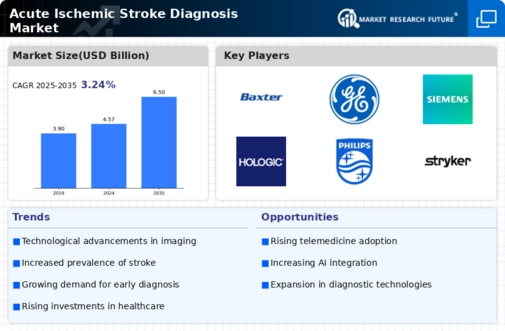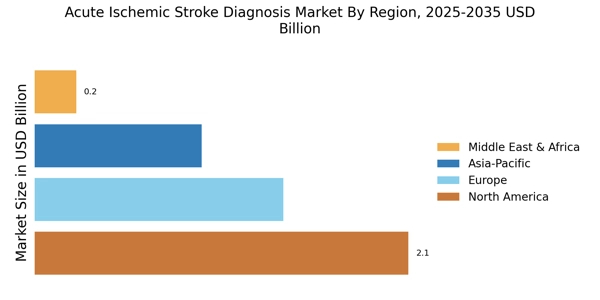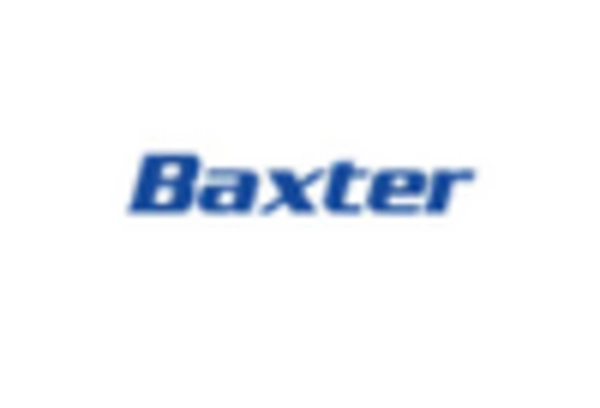Rising Incidence of Stroke Cases
The Acute Ischemic Stroke Diagnosis Market is significantly influenced by the rising incidence of stroke cases worldwide. According to recent statistics, stroke remains one of the leading causes of mortality and morbidity, with millions affected annually. This alarming trend has prompted healthcare systems to prioritize stroke diagnosis and management, thereby driving demand for advanced diagnostic solutions. The increasing prevalence of risk factors such as hypertension, diabetes, and obesity further exacerbates this issue. Consequently, the market is expected to expand as healthcare providers seek to implement more effective diagnostic protocols to address the growing burden of stroke-related health issues.
Government Initiatives and Funding
Government initiatives and funding play a pivotal role in shaping the Acute Ischemic Stroke Diagnosis Market. Various health authorities are investing in stroke prevention and treatment programs, which include enhancing diagnostic capabilities. For example, funding for research and development of new diagnostic technologies is on the rise, with several countries allocating substantial budgets to improve healthcare infrastructure. These initiatives not only facilitate the adoption of advanced diagnostic tools but also promote public awareness about stroke symptoms and the importance of timely diagnosis. As a result, the market is likely to witness increased growth driven by supportive policies and financial backing.
Increased Focus on Preventive Healthcare
The Acute Ischemic Stroke Diagnosis Market is also benefiting from an increased focus on preventive healthcare. As awareness of stroke risk factors rises, more individuals are seeking regular health check-ups and screenings. This proactive approach encourages early detection of conditions that may lead to strokes, thereby driving demand for diagnostic services. Healthcare providers are responding by offering comprehensive stroke risk assessments and diagnostic tests. The emphasis on prevention is likely to foster a more informed public, which could lead to earlier interventions and improved outcomes for stroke patients. This trend is expected to sustain market growth in the coming years.
Technological Innovations in Imaging Techniques
The Acute Ischemic Stroke Diagnosis Market is experiencing a surge in technological innovations, particularly in imaging techniques such as CT and MRI. These advancements enhance the accuracy and speed of stroke diagnosis, which is critical for effective treatment. For instance, the introduction of advanced imaging modalities like perfusion imaging and diffusion-weighted MRI has improved the detection of ischemic strokes. As a result, healthcare providers are increasingly adopting these technologies, leading to a projected growth rate of approximately 7% in the market over the next few years. This trend indicates a shift towards more precise diagnostic tools, which could potentially reduce the time to treatment and improve patient outcomes.
Integration of Artificial Intelligence in Diagnostics
The integration of artificial intelligence (AI) in the Acute Ischemic Stroke Diagnosis Market is revolutionizing the way strokes are diagnosed. AI algorithms are being developed to analyze imaging data more efficiently, potentially leading to faster and more accurate diagnoses. This technology can assist radiologists by identifying subtle changes in brain scans that may indicate an ischemic stroke. The growing interest in AI-driven solutions is reflected in the increasing number of partnerships between tech companies and healthcare providers. As AI continues to evolve, it is expected to enhance diagnostic accuracy and efficiency, thereby contributing to the overall growth of the market.


















Leave a Comment